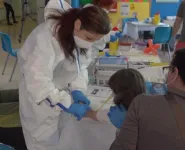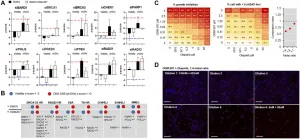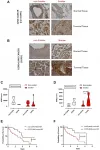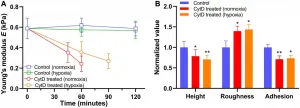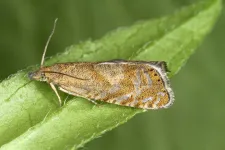Bonding's next top model -- Projecting bond properties with machine learning
2021-07-19
(Press-News.org) Tokyo, Japan - Designing materials that have the necessary properties to fulfill specific functions is a challenge faced by researchers working in areas from catalysis to solar cells. To speed up development processes, modeling approaches can be used to predict information to guide refinements. Researchers from The University of Tokyo Institute of Industrial Science have developed a machine learning model to determine characteristics of bonded and adsorbed materials based on parameters of the individual components. Their findings are published in Applied Physics Express.
Factors such as the length and strength of bonds in materials play crucial roles in determining the structures and properties we experience on the macroscopic scale. The ability to easily predict these characteristics is therefore valuable when designing new materials.
The density of states (DOS) is a parameter that can be calculated for individual atoms, molecules, and materials. Put simply, it describes the options available to the electrons that arrange themselves in a material. A modeling approach that can take this information for selected components and produce useful data for the desired product--with no need to make and analyze the material--is an attractive tool.
The researchers used a machine learning approach--where the model refines its response without human intervention--to predict four different properties of products from the DOS information of the individual components. Although the DOS has been used as a descriptor to establish single parameters before, this is the first time multiple different properties have been predicted.
"We were able to quantitatively predict the binding energy, bond length, number of covalent electrons, and the Fermi energy after bonding for three different general types of system," explains study first author Eiki Suzuki. "And our predictions were very accurate across all of the properties."
Because the calculation of DOS of an isolated state is less complex than for bonded systems, the analysis is relatively efficient. In addition, the neural network model used performed well even when only 20% of the dataset was used for training.
"A significant advantage of our model is that it is general and can be applied to a wide variety of systems," study corresponding author Teruyasu Mizoguchi explains. "We believe that our findings could make a significant contribution to numerous development processes, for example in catalysis, and could be particularly useful in newer research areas such as nano clusters and nanowires."
INFORMATION:
The article, "Accurate Prediction of Bonding Properties by a Machine Learning-based Model using Isolated States Before Bonding", was published in Applied Physics Express at DOI: 10.35848/1882-0786/ac083b.
About Institute of Industrial Science (IIS), the University of Tokyo
Institute of Industrial Science (IIS), the University of Tokyo is one of the largest university-attached research institutes in Japan.
More than 120 research laboratories, each headed by a faculty member, comprise IIS, with more than 1,200 members including approximately 400 staff and 800 students actively engaged in education and research. Our activities cover almost all the areas of engineering disciplines. Since its foundation in 1949, IIS has worked to bridge the huge gaps that exist between academic disciplines and real-world applications.
[Attachments] See images for this press release:

ELSE PRESS RELEASES FROM THIS DATE:
2021-07-19
Testing of an entire Italian town shows antibody levels remain high nine months after SARS-CoV-2 infection, whether symptomatic or asymptomatic.
Researchers from the University of Padua and Imperial College London tested more than 85 percent of the 3,000 residents of Vo', Italy, in February/March 2020 for infection with SARS-CoV-2, the virus that causes COVID-19, and tested them again in May and November 2020 for antibodies against the virus.
The team found that 98.8 percent of people infected in February/March showed detectable levels of antibodies in November, and there was no difference between people who had suffered symptoms of COVID-19 and those that had been symptom-free. The results are ...
2021-07-19
Why do alterations of certain genes cause cancer only in specific organs of the human body? Scientists at the German Cancer Consortium (DKTK), the Technical University of Munich (TUM), and the University Medical Center Göttingen have now demonstrated that cells originating from different organs are differentially susceptible to activating mutations in cancer drivers: The same mutation in precursor cells of the pancreas or the bile duct leads to fundamental different outcomes. The team discovered for the first time that tissue specific genetic interactions are responsible for the differential susceptibility of the biliary and the pancreatic epithelium towards ...
2021-07-19
The climate crisis will lead to changes in distribution and habitat loss of stony corals in the tropical Atlantic, shows a new study published by the open access publisher Frontiers. The loss of such coral species could have devastating consequences for the marine ecosystems they inhabit. The results of the study highlight an urgent need for coral reef management in the Atlantic.
Researchers at the University of São Paulo projected current and future distributions of three key reef building corals of the tropical Atlantic (Mussismilia hispida, Montastraea cavernosa and the Siderastrea complex). They ...
2021-07-19
To prepare for the next pandemic and provide a coordinated approach to vaccination across the country, Canada should create Canadian Immunization Services based on the Canadian Blood Services model, authors propose in CMAJ (Canadian Medical Association Journal).
The authors, including a leading health policy and immunization expert, a blood system expert and a former federal minister of health, are Dr. Kumanan Wilson, professor, Department of Medicine and member of the Centre for Health Law, Policy and Ethics, University of Ottawa; Dr. Graham Sher, CEO, Canadian Blood Services; and Dr. Jane Philpott, Dean, Faculty of Health Sciences, Queen's University.
"If we want to be better prepared for the ...
2021-07-19
Philadelphia, July 19, 2021 - University of Minnesota School of Public Health researchers recently completed a study to determine how food-insecure young (emerging) adults (18-29 years of age) adapted their eating and child feeding behaviors during the COVID-19 pandemic. The researchers also sought to identify barriers to food access and opportunities to improve local access to resources for emerging adults. Their END ...
2021-07-19
Oncotarget published "Ex vivo analysis of DNA repair targeting in extreme rare cutaneous apocrine sweat gland carcinoma" which reported a rare metastatic case with a PALB2 aberration identified previously as a familial susceptibility gene for breast cancer in the Finnish population.
As PALB2 exhibits functions in the BRCA1/2-RAD51-dependent homologous DNA recombination repair pathway, we sought to use ex vivo functional screening to explore sensitivity of the tumor cells to therapeutic targeting of DNA repair.
Drug screening suggested sensitivity of the PALB2 deficient cells to BET-bromodomain inhibition, and modest ...
2021-07-19
Oncotarget published "Caspase-11 and AIM2 inflammasome are involved in smoking-induced COPD and lung adenocarcinoma" which reported that cigarette smoking is the leading risk factor for COPD and lung cancer establishment.
Epidemiologically, COPD patients are 6.35 times more likely to develop lung cancer.
To mimic COPD, the authors exposed mice to nose-only cigarette smoke and used human samples of lung adenocarcinoma patients according to the smoking and COPD status.
Interestingly, higher expression of AIM2 in non-cancerous tissue of smoking COPD adenocarcinoma patients was correlated to a higher hazard ratio of poor survival ...
2021-07-19
Oncotarget published "Dynamic cellular biomechanics in responses to chemotherapeutic drug in hypoxia probed by atomic force spectroscopy" which reported that by exploiting single-cell, force spectroscopy methods, the authors probed biophysical and biomechanical kinetics of brain, breast, prostate, and pancreatic cancer cells with standard chemotherapeutic drugs in normoxia and hypoxia over 12-24 hours.
After exposure to the drugs, they found that brain, breast, and pancreatic cancer cells became approximately 55-75% less stiff, while prostate cancer cells became more stiff, due to either drug-induced ...
2021-07-19
Butterflies and moths (order Lepidoptera) are one of the most diverse animal groups. To date, scientists have found as many as 5,000 species from the Alps alone. Having been a place of intensive research interest for 250 years, it is considered quite a sensation if a previously unknown species is discovered from the mountain range these days. This was the case when a Swiss-Austrian team of researchers described a new species of alpine moth in the open-access, peer-reviewed journal Alpine Entomology, solving a 180-year-old mystery.
Decades of research work
Initially, the team - Jürg Schmid, a full-time dentist, author and passionate butterfly and moth researcher from Switzerland, and Peter Huemer, head of the natural science collections ...
2021-07-19
Researchers are using computer models to simulate COVID-19 infections on a cellular level - the basic structural level of the human body.
The models allow for virtual trials of drugs and vaccines, opening the possibility of pre-assessment for drug and vaccine efficacy against the virus.
The research team at the University of Waterloo includes Anita Layton, professor of applied mathematics and Canada 150 Research Chair in mathematical biology and medicine, and Mehrshad Sadria, an applied mathematics PhD student.
The team uses "in silico" experiments to replicate how the human immune system deals with the COVID-19 virus. In silico refers to trials situated in the silicon of computer chips, as opposed to "in ...
LAST 30 PRESS RELEASES:
[Press-News.org] Bonding's next top model -- Projecting bond properties with machine learning

